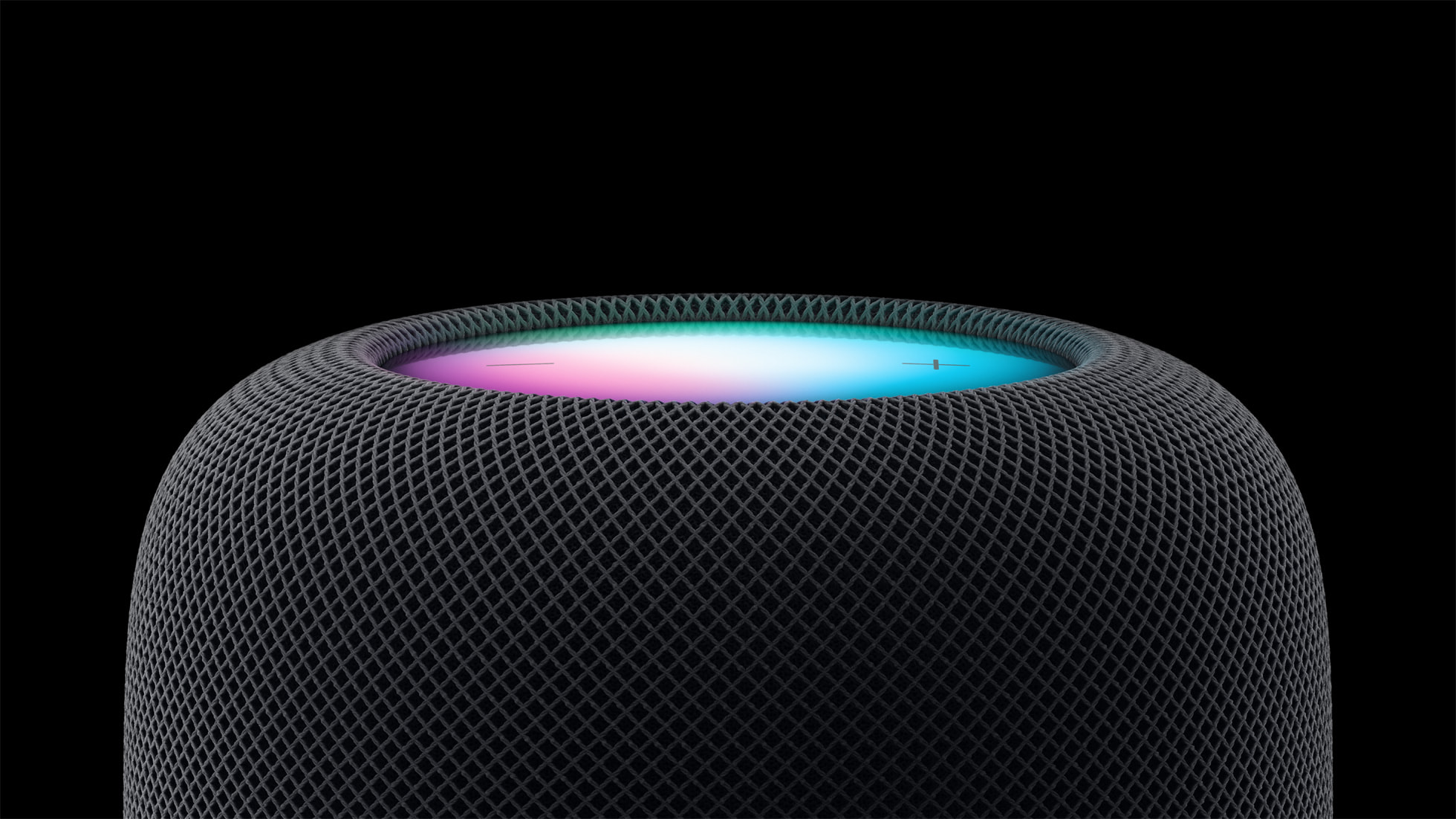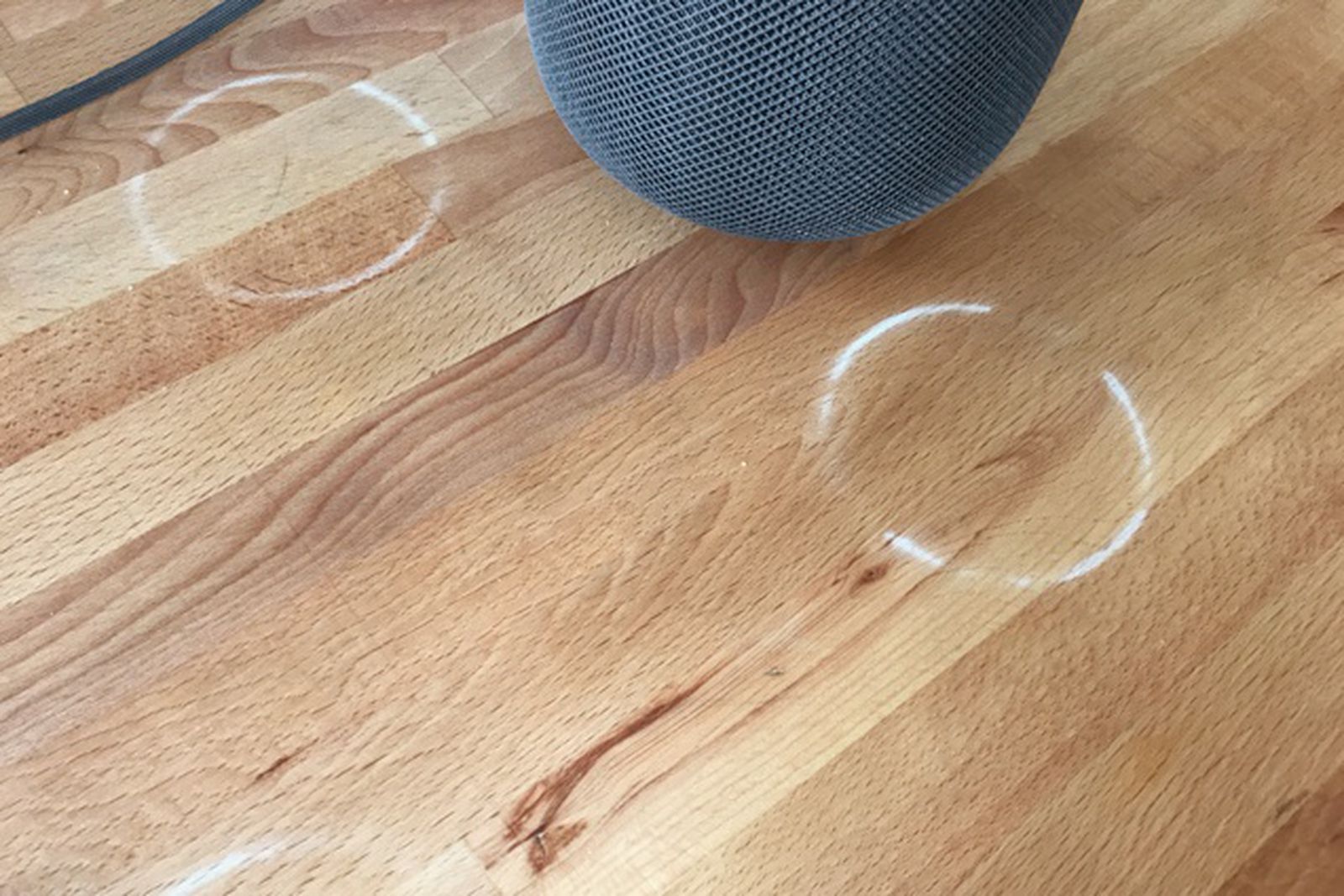Until they fix Siri and improve airplay/HomeKit, stuff like this is just spinning wheels -
Got a tip for us?
Let us know
Become a MacRumors Supporter for $50/year with no ads, ability to filter front page stories, and private forums.
New HomePod and HomePod Mini Now Feature Temperature and Humidity Sensing [Updated]
- Thread starter MacRumors
- Start date
- Sort by reaction score
You are using an out of date browser. It may not display this or other websites correctly.
You should upgrade or use an alternative browser.
You should upgrade or use an alternative browser.
I’m curious, what improvements are you looking for when it comes to Airplay?Until they fix Siri and improve airplay/HomeKit, stuff like this is just spinning wheels -
I have an Ecobee thermostat which I love. This is great news. However, I can see a problem with actually using the speaker’s data. You have to be thoughtful about where you put a thermostat to get a useful reading. You don’t want it too high or too low, or near something that might significantly impact the readings. Deciding where to place a speaker is a different set of reasoning than where you place a thermostat. I assume you can chose not to use the thermometer reading. So this shouldn’t be an issue. I’m glad they are making this feature active. But I may just use it for information and not have it factored into how my HVAC runs.
You would ask what the temperature is in whatever room you’ve assigned the HomePod to in the Home app, e.g. “what’s the lounge temperature?”How would it work I have a tado smart heating so when I say what’s the temp it says what the home temp is how can I ask just the room using the HomePod temp not the main thermostat
They've also raised the price of the HomePod mini by another £10 to £99 here in the UK. I've been pondering buying one for a while but the price was putting me off. Now I have to decide quick whether to buy from a third-party before they raise their prices too or just forget it.
Temperature and humidity sensor for my HomePod Mini, amazing... now, I have to move the HomePod because right now it's behind my TV in a corner of the house so I know the readings won't be accurate. Yet I liked the idea of the sound coming directly at me when watching AppleTV shows. Not sure where exactly I'll move it to...
“And with the new accelerometer, I’ll be able to quickly tell how fast my castle is moving.”
—Howl
—Howl
And I don’t think Alexa is long for this world. It was supposed to be a money maker for them, but it accounts for a huge loss.It's significantly better than Alexa.

Amazon Alexa is a “colossal failure,” on pace to lose $10 billion this year
Layoffs reportedly hit the Alexa team hard as the company’s biggest money loser.
 arstechnica.com
arstechnica.com
You confirm that temperature and humidity work on HomePod mini ? I can’t see that on the Store website. They only speak of them for the new “big” HomePod.Temperature and humidity sensor for my HomePod Mini, amazing... now, I have to move the HomePod because right now it's behind my TV in a corner of the house so I know the readings won't be accurate. Yet I liked the idea of the sound coming directly at me when watching AppleTV shows. Not sure where exactly I'll move it to...
When clicking on this link: https://www.apple.com/shop/buy-homepod/homepodYou confirm that temperature and humidity work on HomePod mini ? I can’t see that on the Store website. They only speak of them for the new “big” HomePod.
Scroll down to 'Which HomePod is right for you?' where they compare the HomePod mini to the HomePod. Both devices say temperature and humidity sensor.
latency could be much better, its about 1second. 10ms would be niceI’m curious, what improvements are you looking for when it comes to Airplay?
This is why I just don't get Apple. They will do things like this, but HomePod Siri can't recognize songs stored on my Mac, ones stored on my phone, nor several purchased from the store and a part of my official Apple Music.Until they fix Siri and improve airplay/HomeKit, stuff like this is just spinning wheels -
It's kinda like the $4.99 Siri only Apple Music. It costs an extra $5 per month just to ensure you can actually play the song you want without trying several times
Probably not. With the more advanced processor, they likely needed fewer microphones and fewer tweeters given the capabilities of their computational audio.5 tweeters vs. 7 tweeters on the OG model, so it will probably sound a bit worse.
This is the Apple that I miss, not having to buy new products to get the newest features
The reintroduced HomePod offers a temperature and humidity sensor, but Apple is also enabling the feature on the existing HomePod mini.

The HomePod's built-in temperature and humidity sensor can measure indoor environments, allowing users to create automations that close the blinds or turn on a fan or heater automatically when a certain temperature is reached in a room, for example. This information is exposed in the Home app like any other smart home accessory.
As highlighted in the comparison section of the HomePod webpage, the HomePod mini also now offers this functionality. It appears that rather than being a new version of the HomePod mini, this is a retroactively activated feature, with the temperature and humidity sensor already existing inside all HomePod mini models since launch.
In 2021, Bloomberg's Mark Gurman said that the HomePod mini includes a dormant temperature and humidity sensor – a finding also confirmed by iFixit. It seems that the component is now finally being activated, presumably via a future software update.
Apple notes that the HomePod's temperature and humidity sensing is optimized for indoor, domestic settings with ambient temperatures between 15ºC and 30ºC and relative humidity around 30 to 70 percent.
The sensor's accuracy may decrease in some situations where audio is playing for an extended period of time at high volume levels, likely due to generation of heat from the device itself. The HomePod also apparently requires some time to calibrate the sensors immediately after starting up before results are displayed.
Update: HomePod software version 16.3 enables the temperature and humidity sensor in the HomePod mini, according to Apple's release notes.
Article Link: New HomePod and HomePod Mini Now Feature Temperature and Humidity Sensing [Updated]
Did it actually stain the surfaces, though? Ah, just searched and it doesn’t stain the surface.I wonder if they still use the same silicon on the base that stains your surfaces?

Apple Says HomePod Mini Won't Leave Marks on Waxed or Oiled Wood Surfaces
Shortly after the full-size HomePod launched in 2018, some customers noticed that the speaker left white rings on wood surfaces with an oil or wax finish. Apple confirmed this possibility in a support document, noting that "it is not unusual for any speaker with a vibration-damping silicone base...
Last edited:
10ms of latency on a protocol which is expected to be able to simulcast to several devices which are all different distances from the access point is likely further than AirPlay could go. 10ms would also defeat the buffering built in to ensure continuous audio streaming.latency could be much better, its about 1second. 10ms would be nice
thanks for your explanation.10ms of latency on a protocol which is expected to be able to simulcast to several devices which are all different distances from the access point is likely further than AirPlay could go. 10ms would also defeat the buffering built in to ensure continuous audio streaming.
i thought airplay is wifi based and so i expected that its faster than bluetooth (which has 10ms or so)
low latency is a main requirement in any music making system.
to test airplay latancy simply
open garageband on ipad or iphone (or any other sound making app)
choose an instrument (guitar, drums, keyboard it doesnt matter)
play a few notes over airplay
you will see the problem.
as a conclusion i can use these apps only with the internal speaker of the iphone ipad. thats a big mess.
Yes, u can use adapters and cables, but in practice this cables have to be 3,4,5meters or longer, thats unpractical and annoying.
In the case you have Homepods you cant even plug cables in.
imagine you can play a „stairway to heaven“ guitar with an iphone over airplay to your good sounding speakers in your livingroom ☕️
That’s a neat feature but unfortunately it’s consistently over 30 here and the humidity is always at least 80%.
Yay! Great feature indeed, can't wait!Excellent! That's a great added feature!
Pretty depressing, isn’t it?Wow a feature that was there, but disabled for years.
Right, and AirPlay is not a music making system. AirPlay is for the distribution of a non-real time audio signal with protections built in to ensure that bandwidth fluctuations, local networking issues and and signal drop out will have little impact on the signal delivery. “That the audio gets there, in high quality, in synch, consistently” is the focus with AirPlay. It’s not designed to be the output for audio being live captured (like as a PA or Karaoke system).thanks for your explanation.
i thought airplay is wifi based and so i expected that its faster than bluetooth (which has 10ms or so)
low latency is a main requirement in any music making system.
Like you said, the only way to do that would be with cables… OR, actually, there are some proprietary non-AirPlay wireless devices that could possibly do it.imagine you can play a „stairway to heaven“ guitar with an iphone over airplay to your good sounding speakers in your livingroom ☕️
Register on MacRumors! This sidebar will go away, and you'll see fewer ads.



